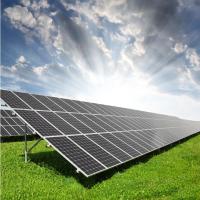Date: 21 November 2006
Our receiver makes us the global technology leader. Now, our goal is to become the market leader, as well. We decided to build our second production line in Spain, because this is where our European customers are based. Furthermore, the region along the Mediterranean has developed into a promising market for solar thermal power plants,” said Professor Udo Ungeheuer, Chairman of the Board of Management of SCHOTT AG.
Francisco Vallejo Serrano, Regional Minister of Innovation, Science and Enterprises for Andalusia appreciates the decision made by SCHOTT: “This is fantastic news which will convert Andalusia into an international reference for the use of solar energy as a clean energy source. It will help to develop a strong industry in the field of renewable energies, in which Andalusia is yet one of the leading regions in Europe.”
SCHOTT has already received orders to supply receivers for the solar power plants “Nevada Solar One” in the U.S. state of Nevada and in Andalusia (Spain) that are currently under construction. The project in Andalusia represents the first commercially operated solar thermal power plant in Europe.
Because they offer the highest level of efficiency and incur the lowest costs for generating power of all solar technologies, parabolic trough power plants will soon offer the potential to generate solar electricity inside the world’s Sunbelt at competitive prices. This technology has proven to be a reliable source of centralized power generation for 20 years. Nine solar thermal power plants located in the Mojave Desert in California, with a total capacity of 354 megawatts, have been supplying 200,000 households with electricity for just as long. Even then, SCHOTT delivered the high quality special glass tubing as envelopes for the receivers. In 2004, SCHOTT developed its own high-performance receiver that offers substantially improved quality.
Parabolic trough power plants consist of numerous trough-shaped parabolic mirrors that concentrate sunlight onto receivers (absorber tubes) that are located along the focal line. Inside these specially coated receivers, concentrated solar radiation is converted into heat which is transferred to a special heat resistant transfer fluid reaching temperatures of up to 400° Celsius (752 °F). This fluid is pumped to the central generating unit. It passes through several downstream heat exchangers and, as in conventional power plants, generates the steam that is required to drive the turbines that produce electricity.
Politicians are becoming increasingly conscious of solar thermal power plants and their potential to provide an important option for power generation in the future. “renewables 2004”, the International Conference for Renewable Energies held in Bonn, Germany, adopted the Global Market Initiative (GMI) on market introduction of solar thermal power plants as part of its activity program. In September of 2005, the European Parliament called upon the European Commission to offer subsidies for solar thermal power plants. Finally, at the World Energy Dialogue that was part of the Hanover Trade Fair in 2006, the Club of Rome also emphasized the importance of building solar thermal power plants, particularly in Spain and North Africa.












Add new comment